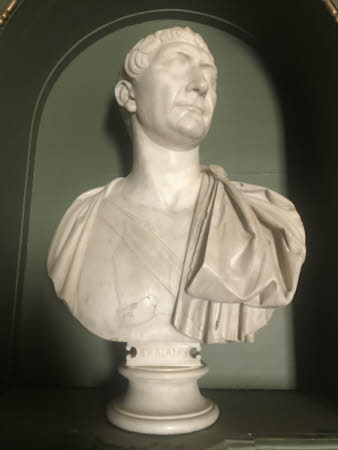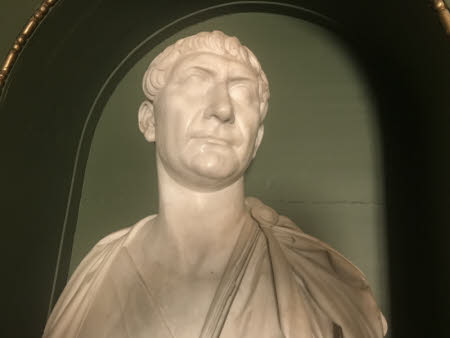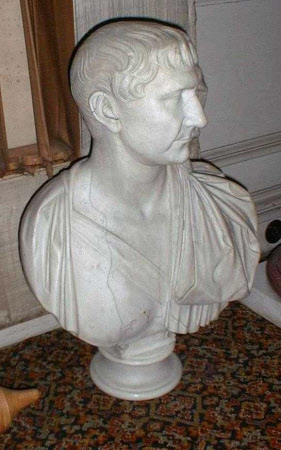Trajan, Emperor of Rome
Category
Art / Sculpture
Date
98 AD - 200 AD - 1701 - 1799
Materials
Marble on turned marble socle
Measurements
550 x 455 x 380 mm
Order this imageCollection
Belton House, Lincolnshire
NT 436775
Summary
Marble on plaster socle, Emperor Trajan (53-117 AD), 2nd century AD with 18th century restorations. A white marble bust of Trajan, with head turned to the left, wearing a cloak gathered on proper left shoulder, fastened with a round fibula, and a sword belt over proper right shoulder, across chest. The bust is mounted on a plaster socle inscribed ‘TRAIANO’ showing traces of red paint. Significant restorations have been undertaken to the face and truncation; the nose and drapery are certainly modern, probably 18th century.
Full description
Trajan (born 53 AD) was Roman Emperor from 98 AD to his death in 117 AD. He is remembered for expanding the Empire to its maximum territorial extent and for transforming the city of Rome through extensive public building programmes. His efforts as a military leader, specifically his conquest of Dacia (modern-day Romania), are commemorated in the eponymous Trajan's Column erected in Trajan's Forum, Rome. This bust of the emperor is of the 'Opferbildtypus', a portrait-type derived from Trajan’s Column. A plaster cast from a marble bust very similar to this example was procured - with no archival record - by Johann Martin von Wagner (1777-1858), the artist, sculptor and art agent for Ludwig I of Bavaria, whose collection is the foundation of the Martin von Wagner Museum in Wurzburg. That cast is discussed in Walter H Gross's 'Bildnisse Trajans, Das römische Herrscherbild' where he states that the marble from which the Wagner cast was produced was lost sometime before 1940 (Gross 1940, pp.110, 132, 137, pl. 31a). Gross conjectures that the marble may have come from the collection of John Campbell, 1st Baron Cawdor (c.1753-1821), who was acquainted with Wagner in Greece, and who owned a bust of Trajan sold by Skinner & Dyke, on 6 June 1800 (lot 76). Copies of the Wagner cast include one produced around 1890-1900 at the Gipsformerei, a renowned replica workshop in Berlin, which was later purchased for the Cornell University cast collection (identifier 305). Alice Rylance-Watson January 2019
Credit line
Belton House, The Brownlow Collection (acquired with the help of the National Heritage Memorial Fund by the National Trust in 1994)
Marks and inscriptions
Socle, front: TRAIANO
References
Gross 1940: Walter Hatto Gross, Blidnisse Trajans, Das römische Herrscherbild. (Berlin 1940), pp.110, 132 no.71, pl.31a Visconti 1819: Ennio Quirino Visconti, Il Museo Pio Clementino illustrato e descritto, vol.III (Milan 1819), p. 39



